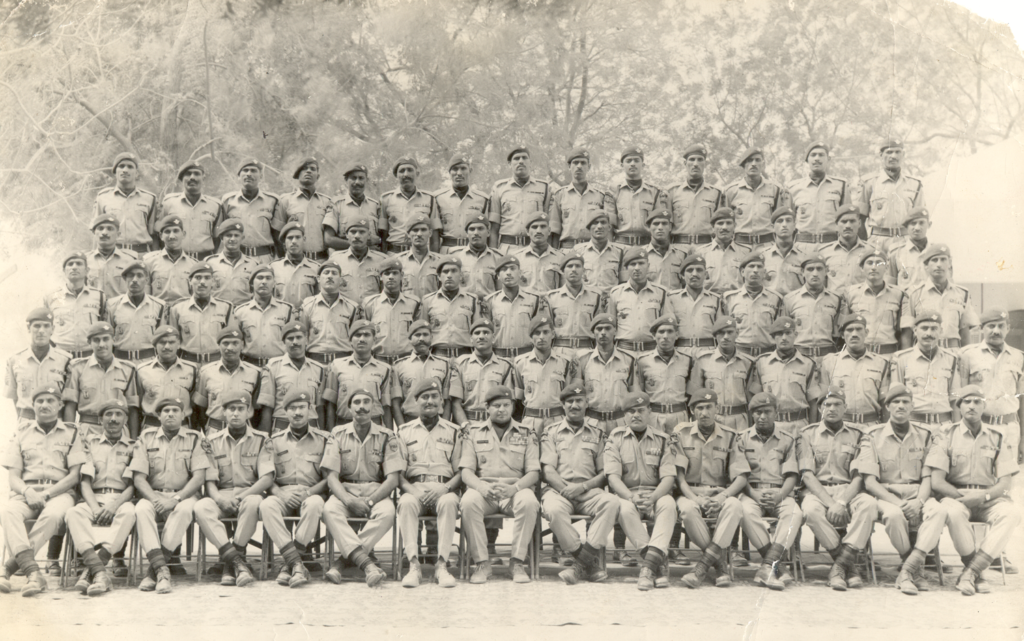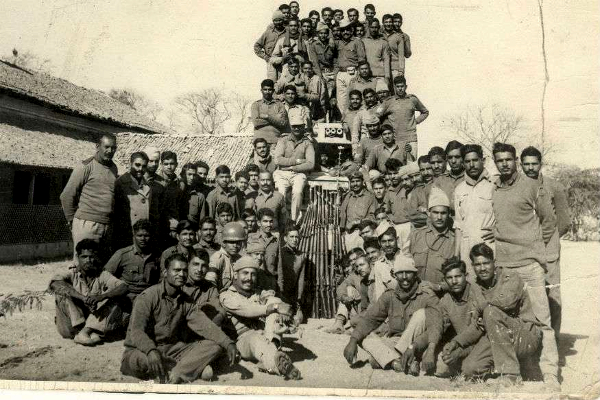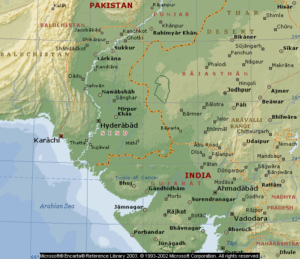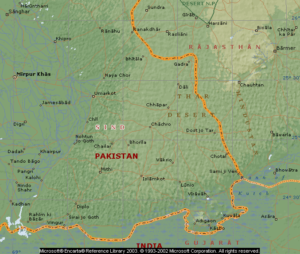One of the most audacious and memorable among the operations inside Paksitan is the raid on Chachro and several other Pakistani military positions 80km inside enemy territory. Specially-trained commandos of the 10 Para hit enemy positions and returned without suffering a single casualty. News18 gets access to rare photos and speaks to two surviving members of the operation to piece together one of the most challenging missions. This at a time when they had little or no technology to help them deep inside enemy territory. The commandos travelled over 500km hitting Pakistani positions.
At 0700 hours, December 5, 1971, men of the Desert Scorpions (10 Para Commandos) come under intense medium machine gun (MMG) fire from gun positions on top of sand dunes at Kita about 70 km into enemy territory. The Jeep/Jonga-borne commandos take defence positions in the shadow of the night. As they look for options, one Jeep rushes towards the enemy without a care for personal safety, firing at the enemy position. Naik Nihal Singh has opened up his light machine gun (LMG) mounted on his Jeep. The darkness acts as cover, the enemy only has the machine gun burst to aim at. This audacious charge gives the other teams time to start firing — 18 LMGs open up and in a few hours, the enemy positions are overrun, the survivors abandon the posts and escape.
This was the start to one of the most audacious commando missions in the world undertaken by the Indian Army’s Para Commandos. Inspired by the British SAS raid behind enemy lines at a German airfield in Fuka, Lybia during the Second World War, this successful operation established the Indian Army’s dominance in the desert during the 1971 war.
This operation was led by Lt Col Bhawani Singh. For four days, the battalion infiltrated deep inside enemy territory and carried out raids on enemy positions at Chachro and Virwah. Lt Col Singh was awarded the Mahavir Chakra for his leadership and courage.
Objectives of the Commando Team
Two teams — Alpha and Charlie — were trained for five months in desert warfare. A young commando battalion was entrusted with the crucial mission just five years after its formation in 1967. The objectives were to strike enemy positions 80 km inside their territory, hit their supply lines and create confusion. To complete their mission, the teams travelled over 500 km inside enemy territory, hitting various enemy positions despite having little knowledge of the terrain and the challenges that lay ahead.
“Ginger up the enemy” was the theme used by Lt Col Singh, who rose to be a brigadier and one of the most decorated officers in the Indian Army. He was the first to be called after retirement to boost the morale of his unit in Sri Lanka.
Target 1: Battle of Chachro
The team moved slowly through inhospitable terrain only by night. Brigadier Abraham Chacko was a Second Lieutenant then assigned to the Alpha team, the strike team that hit the Wing headquarters of the Pakistani Rangers in Chachro. Their mission — to create chaos and take vital ascents 80 km into enemy territory.
“The route was so bad that all silencers of our Jeeps/Jongas made us sound like a full-tank battalion moving into Pakistan,” remembers Brigadier Chacko. The racket not a positive for commando raid, which relies on stealth and silence. This, however, came out as an advantage for this group as the enemy abandoned positions at several locations thinking that this was indeed a tank column moving.
After the Kita firefight, a small patrol was tasked with route clearance till the wing headquarters at Chachro. This team moved in the night and gave a clearance to attack at 0400 hours on December 7. Alpha team took positions around town blocking every exit point, ready to provide cover fire. Charlie team moved in for the offensive at dawn. The operation was a risky one as the town had many civilians. The fear of collateral damage kept the teams on their toes. They could not risk hostile civilians so deep into enemy territory. The teams moved in swiftly and by first light the town had been taken.
The commandos moved on, their mission was only half complete. The town was handed over to 20 Rajput which counted 17 Pakistani casualties and took 12 prisoners. Such was the planning that the raiding team suffered no casualties. After the Chachro operation, Charlie team exfiltrated while the Alpha team moved towards its second target.
Target 2&3: Virawah and Nagarparkar
For the first raid on Chachro, the team moved only at night to stay undetected, but during the Virawah raid, they moved by day because of paucity of time. This was done at high risk. The team started its assault on Virawah at 0200 hours on December 8. The first contact with the enemy was at an observation post at 0130 hours. “I signalled the Jongas to stop when we noticed movement in the bushes about 25 yards away. A small patrol led by me was formed. Closer to the observation post, I lobbed the grenade and charged. We got into hand to hand combat with the enemy,” remembers Col MPS Choudhary, who led one group of commandos in the attack. As they approached the Rangers camp, the latter fired in panic but in the opposite direction. The commandos opened up the camp with motor fire followed by 12 light machine guns. The assault did not last long. The Rangers fled their positions. Virawah was taken.
The commandos then moved into Nagarparkar and the tehsil headquarter was taken over without much difficulty by the first light of December 8. The teams were back to their bases after this operation.
Target 4: Islamkot
Alpha group did not get much time to rest. They were reassigned immediately to another mission. This was an attack on a suspected ammunition dump in Islamkot. The group entered Pakistan again and reached Sundegaon by 1900 hours on December 16. The village was empty. In the shadow of the night, they moved towards Islamkot and waited just 2 km east of the enemy camp. At 0530 hours, they launched their assault but found the camp empty.
The Ambush at Lunio
On their way back from the mission is when they faced the enemy again. “On our way back after handing over Islamkot, leading Jeep with Captain Das saw dust raised by moving vehicles. We immediately fanned out and went into ambush. Other teams joined in and we opened fire. I think 18-20 enemy soldiers were killed on the spot and rest were taken prisoners of war,” remembers Col MPS Chaudhary.

The Surgical Strike in Numbers
A look at enemy casualty and prisoners of war taken:
Chachro
- Killed – 17
- Prisoners of War – 12
Islamkot
- Killed – 19
- Prisoners of War – 10
Weapons Seized
- .30 MMG with tripod – 01
- .303 Rifles – 26
- .303 LMG – 01
- Sten machine carbine – 01
- Pistols – 02
- .303 ammunition – 10,000 rounds
- Rifle and LMG magazines – 44
- Bayonets – 20
- Double-barrel gun – 01
- Medium-sized truck – 01
- Hand grenades – 03
Training for the Strike
- The commandos trained from June to November for the assault
- ongas and Jeeps were modified to hold guns and all provisions for the mission
- The unit had Khoja Rajputs in the ranks who knew the terrain well
- The team lead by Brigadier Swai Bhawani Singh, who was the Maharaja of Jaipur and knew the area, was lovingly called Tiger by his men for his leadership skills
- TThe commandos were trained in repairing Jeeps and Jongas
Source:News18 (Published with Changes)
Image Courtesy:News18
You may also like
-
IAF Aircraft Set Course For Exercise Eastern Bridge VII At Oman
-
IAF Set To Host The Indian Defence Aviation Exposition-II At Jodhpur
-
Defence Secretary to co-chair 5th India-Philippines Joint Defence Cooperation Committee meeting in Manila
-
Simultaneous Launch Of ‘malpe And Mulki’, Fourth And Fifth Ships Of Asw Swc (Csl) Project
-
Aatmanirbharta in Defence: MoD signs Contract with HAL for 240 AL-31FP Aero Engines for Su-30MKI Aircraft


